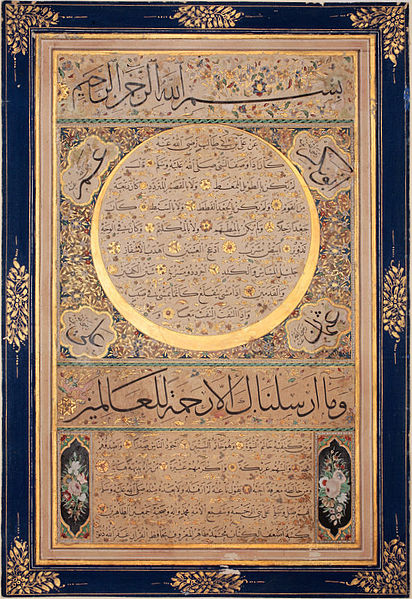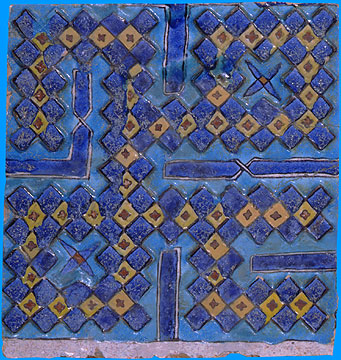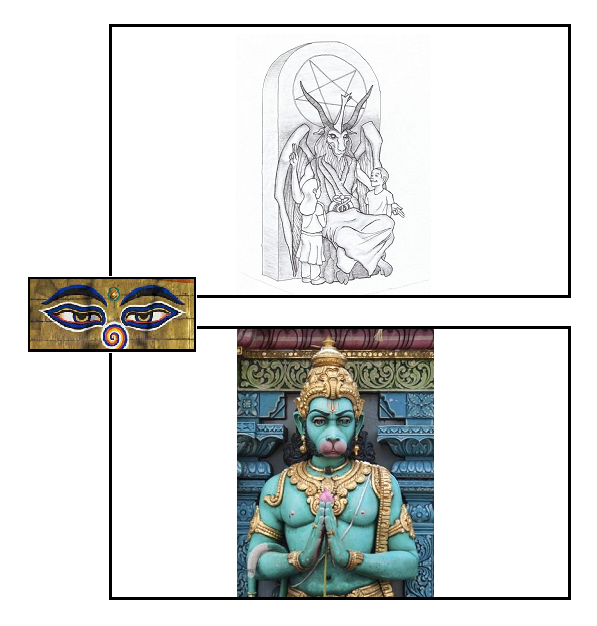Paris, the Prophet and his veiled face
Sunday, January 11th, 2015[ by Charles Cameron — the role of iconography vs idolatry within Islam and Christianity ]
.
Karim Sadjadpour of the Carnegie Endowment for International Peace tweeted an image of Muhammad today:
Images of the prophet Mohammed weren't always taboo. This 16th century Persian miniature depicts his ascent to heaven pic.twitter.com/HdSmAwh8cb
— Karim Sadjadpour (@ksadjadpour) January 9, 2015
This image, according to Wikipedia, is not merely Persian but specifically Shiite, “reflecting the new, Safavid convention of depicting Muhammad veiled”. It is also non-satirical.
As such, it is neither offensive in the sense of insulting the person of the Prophet, nor does it in fact show the features of his face, nor is it the product of the Sunni “mainstream” branch of Islam.
**
In considering the revulsion that many Muslims feel at the images of their Prophet in Charlie Hebdo, it may be helpful to understand the respect in which the Prophet is held within their faith.
The Qur’an says of the Prophet:
And We have not sent you but as a mercy to the worlds.
Muhammad is sent “as a mercy”, and thus whatever representation of the Prophet, his words and deeds serves to carry human thought towards the divine participates in that divine mercy, whereas whatever representation scorns that mercy or merely distracts us from it is to be avoided.
The normative manner in which the Prophet is represented within Islam, then, is abstract and calligraphic, with the artist showing devotion and respect for the Prophet through the care with which the work itself is endowed with beauty:
Simpler, and in its own way no less beautiful, is this calligraphic representation of the Prophet’s name in tile from Samarkand:
**
Icon or idol?
One facet of the controversy over Charlie Hebdo has to do, then, with a deep issue in representation, which crops up elsewhere in the jihadists’ relish in destroying “idols” — the Bamiyan Buddhas, yes, but also the tombs of Muslim prophets and saints; there has even been discussion within Saudi circles of the destruction on the Prophet’s tomb and relocation of his remains to an anonymous grave.
Within Christianity, there have been those who encouraged the painting of icons, believing that they carry the minds and hearts of believers deep into the mysteries of faith — and those who would tear them down, holding them to be “graven images” (via Judaism, Exodus 20.4) that give mind and heart a resting place far short of those same mysteries: iconodules and iconoclasts.
Wars have been fought in Christendom too over such questions [in both East and West].
The great Russian iconographer Andrei Rublev‘s most celebrated icon is often referred to as The Trinity — though literally (or should I say, figuratively) speaking, it portrays the three angels who visited Abraham at the Oak of Mamre (Genesis 18. 1-15):
It is significant for our context that Rublev has not in fact attempted to portray the Trinity, a mystery deemed beyond human comprehension — the Athanasian Creed, speaking of the Three Persons in one God says explicitly “there are not three incomprehensibles .. but one incomprehensible” — but these three angels, considered as “types” or foreshadowings of the Trinity, which can therefore both veil and represent it.






